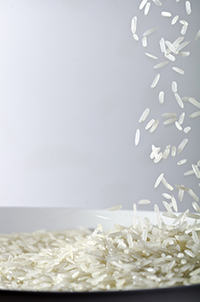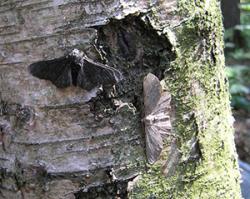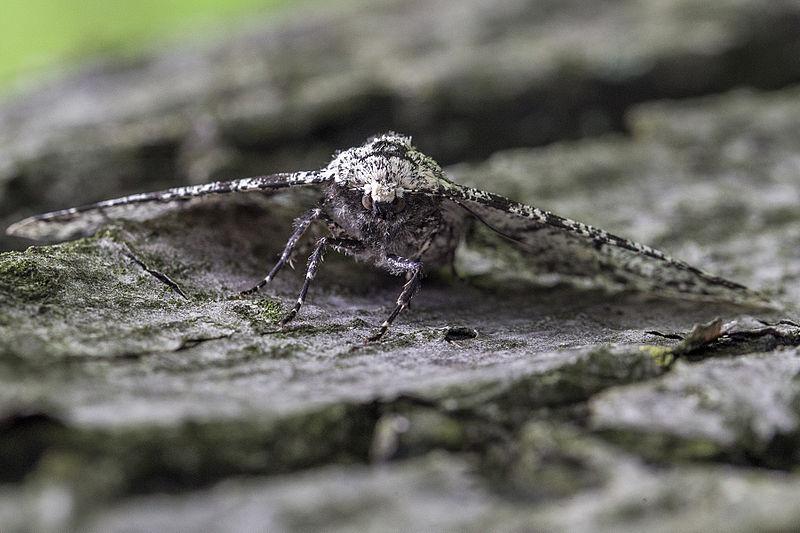Natural Selection Activity - For Teachers
Teaching students about natural selection can be challenging, but our activity Sooty Selection gives students related hands-on experience and takes them through a bit of the history of the science of natural selection.
For just a quick look at how natural selection worked in the peppered moth, visit Picking Off the Peppered Moth.
This activity is designed according to a 5E model. It is recommended for high school students, in grades 9 or above.
For younger grades (3 or 4), we suggest focusing mainly on the Engage and Explore sections, with a brief version of the Explain section.
Tips for Classroom Implementation
Time Required: The entire lesson, including extension, should take around 5 hours (only completing one of the two provided Explore activities). This can be split into one hour per day for four days, plus an hour of homework, or can be distributed evenly throughout a week in class. However, the first three hours are very important, so it is encouraged to have three hours on the first day, with two follow-up hours on subsequent days.

Rice. Via wikimedia.
Classroom set-up: Two different activities can be used (either the computer simulation or the rice activity). For the rice activity, make sure adequate desk space is available for students to work in groups of two or three. Make sure all three worksheets (pre-lesson, classroom worksheet, post-lesson) are printed for each student. The extension worksheet should also be printed if it will be used in class or for homework.
**If doing the rice activity, make sure to count all forceps and double check that all are returned at the end of the rice activity.**
Tips: Make sure to review the PowerPoint and familiarize yourself with the key ideas of natural selection before leading your class through the lesson.
Here is a suggested rubric for grading the pre- and post-lesson quizzes (included in the Experiment Packet [PDF] ):
RUBRIC: 10 points total
- Questions 1-3: worth 2 points each, for 6 points total
- Question 4: worth 4 points
Based on the following criteria, each section of the question will be worth 1 point total.
- did the student answer the questions correctly? (0.25 points)
- whether or not the answer was correct, did they use reasonable logic according to their new knowledge? (0.5 points)
- did their answer include references to the topics covered in class and/or defined concepts we discussed? (0.25 points)
If you are unsure of the answers, feel free to email dr.biology@asu.edu(link sends e-mail).
As a bit of extra information, it may benefit you to know that for a time, a variety of people tried to argue against Kettlewell's experiments. In the 2000s, another scientist, Michael Majerus, completed studies that showed great support for Kettlewell's earlier findings and theories. If you are interested in learning more about the previous argument over Kettlewell's experiments, visit the Peppered Moth Evolution Wikipedia page(link is external).
Extensions

Light and dark peppered moths (Biston betularia) via wikimedia.
In class or as a homework assignment (see Extension Worksheet), students can practice applying the concepts and terms they learned that are associated with adaptations. Assign students with a habitat and an organism from a particular guild (e.g., predators, herbivores, primary producers). They should sketch and describe this organism. Specifically, they should describe the adaptations this species has acquired (through natural selection) that make it successful in its environment. What would happen to this organism if the environment changed (less rainfall or more extreme temperatures, for example)?
They will also be asked to identify and describe one human adaptation (not discussed in class) and how it relates to our environment. Students will be asked to address the five vocabulary terms and how the terms relate to the human adaptation they chose to discuss.
Objectives: After the lesson, students should be able to:
- Explain how the environment can affect the fitness of a population.
- Describe how different traits can lead to increased or decreased fitness.
- Predict how a population with a given trait will change over time due to environmental influences.
- Analyze changes in allele frequencies over time and compare between populations.
- Describe how traits are inherited.
- Discriminate between Darwinian and Lamarckian evolutionary theories.
- Explain why mutations occur, how they relate to the concept of alleles, and how they can change in frequency over time and within a given population.
- Apply knowledge gained from the rice experiment or moth simulation to different situations they are presented with.
- Evaluate the evidence for human adaptation and evolution via natural selection.
Standards
Arizona Science Standards
Grade 3
Strand 4: Life Science
Concept 4: Diversity, Adaptation and Behavior
PO 1. Identify adaptations of plants and animals that allow them to live in specific environments.
PO 2. Describe ways that species adapt when introduced to new environments.
Grade 4
Strand 4: Life Science
Concept 4: Diversity, Adaptation and Behavior
- PO 1. Recognize that successful characteristics of populations are inherited traits that are favorable in a particular environment.
- PO 2. Give examples of adaptations that allow plants and animals to survive: camouflage.
Grade 8
Strand 4: Life Science
Concept 4: Diversity, Adaptation and Behavior
- PO 1. Explain how an organism's behavior allows it to survive in an environment.
- PO 2. Describe how an organism can maintain a stable internal environment while living in a constantly changing external environment.
- PO 3. Determine characteristics of organisms that could change over several generations.
- PO 6. Describe the following factor that allows for survival of living organisms: protective coloration
High School
Strand 4: Life Science
Concept 4: Biological Evolution
- PO 1. Identify the following components of natural selection, which can lead to speciation: (1) potential for a species to increase its numbers, (2) finite supply of resources required for life, and (3) selection by the environment for those offspring better able to survive and produce offspring.
- PO 4. Predict how a change in an environmental factor (e.g., rainfall, habitat loss, non-native species) can affect the number and diversity of species in an ecosystem.
Common Core Standards
CCSS.ELA-LITERACY.RST.6-8.1 Cite specific textual evidence to support analysis of science and technical text.
CCSS.ELA-LITERACY.RST.6-8.2 Determine the central ideas or conclusions of a text; provide an accurate summary of the text distinct from prior knowledge or opinions.
CCSS.ELA-LITERACY-RST.6-8.4 Determine the meaning of symbols, key terms, and other domain-specific words and phrases as they are used in a specific scientific or technical context relevant to grades 6-8 texts and topics.
Next Generation Science Standards
MS-LS4-4: Construct an explanation based on evidence that describes how genetic variations of traits in a population increase some individuals' probability of surviving and reproducing in a specific environment.
HS-LS4-4: Construct an explanation based on evidence for how natural selection leads to adaptation of populations.
HS-LS4-5: Evaluate the evidence supporting claims that changes in environmental conditions may result in: (1) increases in the number of individuals of some species, (2) the emergence of new species over time, and (3) the extinction of other species.
View Citation

Download the Sooty Selection Experiment (PDF) and the Sooty Selection PowerPoint
Be Part of
Ask A Biologist
By volunteering, or simply sending us feedback on the site. Scientists, teachers, writers, illustrators, and translators are all important to the program. If you are interested in helping with the website we have a Volunteers page to get the process started.







